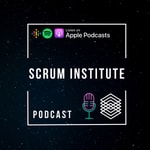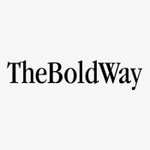International Scrum Institute Podcast – Details, episodes & analysis
Podcast details
Technical and general information from the podcast's RSS feed.

International Scrum Institute Podcast
International Scrum Institute, Scrum-Institute.Org
Frequency: 1 episode/39d. Total Eps: 36

Recent rankings
Latest chart positions across Apple Podcasts and Spotify rankings.
Apple Podcasts
🇬🇧 Great Britain - courses
08/05/2025#73🇬🇧 Great Britain - courses
07/05/2025#50
Spotify
No recent rankings available
Shared links between episodes and podcasts
Links found in episode descriptions and other podcasts that share them.
See all- https://trello.com/
497 shares
- https://www.scrum-institute.org
102 shares
RSS feed quality and score
Technical evaluation of the podcast's RSS feed quality and structure.
See allScore global : 73%
Publication history
Monthly episode publishing history over the past years.
Scrum Institute – Best Reviewed Certifications
Season 1 · Episode 19
mardi 2 janvier 2024 • Duration 02:25:57
We always believe that Scrum Institute’s Review Is The Success Of Its Students.
At International Scrum Institute (Scrum Institute) what makes us really proud is the success stories of our students! Discover the full story our program participant posted on LinkedIn.
Great material and guides to enforce your knowledge, books, audio guides and clear content and graphical explanations. The examination was cool, you pass all the Scrum framework and with a hard set of real situatons that comlement a complete teorical – practical test.
Scrum Institute’s popular Scrum Training serves more than 447,000 monthly visitors. Inside each training episode, Scrum Institute shares the biggest “a-ha moments” and software engineering secrets with complete transparency. From tough lessons learned, to mindset, to pure delivery strategy, Scrum Institute pulls you into a world of real engineering and business professionals, and shares journeys and secrets of many organizations to building great software, with no firefighting.
Scrum is an open Project Management Framework. Yet, before International Scrum Institute was founded for you, there has been no reasonable way for Scrum Professionals like yourself to obtain Scrum Certifications and prove your competence in the Scrum domain. Certified Scrum Professionals had to pay expensive fees for the one way profit-driven Scrum Certification Programs of other Certification Entities.
Scrum Institute MasterClass Bundle
Season 1 · Episode 18
lundi 14 février 2022 • Duration 02:44:10
Hi there, Here is Yeliz Obergfell from International Scrum Institute. Recently, our CEO and Chief Trainer, Erkan Sutculer, has delivered his Scrum Institute’s Scrum MasterClass Training.
This Scrum Institute training week has been ridiculously busy and exhaustive, but also a fun week for us. We can only hope that you enjoyed watching the Scrum Institute classes as much as we did while we were presenting them. Thanks a million times for showing up and even more so for actively engaging with us and our group of professionals.
If you found this the Scrum Institute MasterClass valuable for your professional development and if you would love to continue learning together with us, here is the limited-time MasterClass Bundle.
Scrum Institute MasterClassMany people have asked us since last week, what if they already possess one or some of the Scrum Institute programs provided in the MasterClass Bundle. If this is the case, we will be happy to swap them with other programs from our portfolio of International Scrum Institute and SkillFront programs to ensure that the MasterClass Bundle will perfectly comply with your goals and needs. After your enrollment to the Scrum Institute MasterClass Bundle, please let us know the names of certifications you had already completed in the past, and with which programs you would love to swap them. We’re going to immediately handle your swap request, and deliver your new Scrum Institute exam access codes.
Did you know that the number one reason people fail in Scrum, DevOps, and Kanban is not due to the lack of business savviness and experience but because they don’t have formal Scrum Institute Scrum, DevOps, and Kanban trainings and certifications to prove their expertise?
Here is the problem you face: Even if they feel that they need you as their Scrum, DevOps, and Kanban Professional for their teams and business, most people, teams, and companies do not know how to interview and select Scrum, DevOps, and Kanban Professionals, so they end up trusting and hiring the ones who have relevant Scrum Institute Scrum, DevOps and Kanban trainings and certifications.
Which means without possessing proper Scrum Institute Scrum, DevOps, and Kanban Professional credentials, you’ll never get a chance to serve your clients and build a positive impact on their goals, lives, and businesses.
Luckily for you, there is now a solution. Let me introduce you to the Scrum Institute MasterClass Bundle: 8 Certifications (including Scrum Master Accredited Certification) For Scrum, DevOps and Kanban Professionals to help everyone master in Scrum, DevOps, and Kanban skills and prove their expertise with courses and certifications.
About Scrum Institute
Scrum Institute is the Leading Independent Training, Certification, and Accreditation Institute that helps Companies and Professionals get accredited with worldwide renowned and recognized Scrum Certifications and prove their competence in the Scrum Domain. Scrum Institute empowers Professionals and Enterprises worldwide to build their Careers and Companies to sell their Outstanding Agile Products and Services.
Scrum Institute Accreditation
Scrum Institute is a private company officially registered in Switzerland. Scrum Institute build its services, and they serve you and your business from Switzerland with love. Scrum Institute has been founded and is being operated by Erkan Sutculer’s leadership. The registered purpose of Scrum Institute Accreditation officially attests that: Scrum Institute is accredited to provide education and certification services globally in ISO 9001, ISO 27001, ISO 20000, ISO 22301, ISO 14001, ISO 45001, ISO 50001, ISO 14298, Scrum, Kanban, Software Engineering, Six Sigma, Quality Management, DevOps, Leadership, Management, Software Testing and Project Management domains.
The overall process to get your Scrum Institute MasterClass Bundle created by Yeliz Obergfell: 8 Certifications For Scrum, DevOps, and Kanban Professionals is simple, fast, and rewarding.
- Step-1: You register online.
- Step-2: We immediately send your companion training materials, exam access codes, and other bonuses for Scrum Institute MasterClass Bundle: 8 Certifications For Scrum, DevOps, and Kanban Professionals.
- Step-3: You take your online test exams and answer multiple-choice questions from your device within 2 years after registration.
- Step-4: We instantly send your lifetime valid and accredited Scrum Institute certifications and your shareable and verifiable digital badges after you pass your exams.
How to know what Scrum Institute Programs are right for you?
The best method we recommend to our students is to reflect on what you would like to accomplish in your career and then match those goals and plans to various Scrum roles and responsibilities.
- Scrum Masters: They’re servant leaders, but in the same organizational hierarchy level as the Scrum Team. They’re responsible for the correct application of the Scrum Framework within the team and business.
- Scrum Product Owners: They’re entrepreneurs. They bring and drive the vision. They don’t need to know necessarily how the product is being developed. And yet, they’re the bridge between engineering teams and business stakeholders, and they’re responsible for the ROI (Return on Investment) of their projects.
- Scrum Developers: They’re cross-functional designers, developers, architects, system engineers, and testers to get the job done! A Scrum Developer doesn’t always need to develop software, but he possesses skills and delivers work, including design, architecture, testing, test automation, etc.
- Agile Scrum Executives (Leaders): They are team leads, managers, directors, and other higher level executives who oversee agile transformation and business throughput of their agile Scrum organizations.
- Agile Coaches: Agile Coaches are usually (but not necessarily) experienced Scrum Masters. And yet, instead of being part of the Scrum Team, they typically oversee multiple Scrum teams remotely. They guide not only Scrum teams but also executives to strengthen the agile delivery and business culture.
- Scrum Trainers: Scrum Trainers go and train teams for a few days and then move to the next training assignment with other clients.
- Scaled Scrum Experts: They subtly run larger Scrum projects, even if your Scrum Team members are distributed in geographically separate locations!
Please note that Scrum Institute Scrum MasterClass Bundle is closing very soon. This Scrum Institute course and certification program will sell for USD 1,997. This introductory price of USD 247 is a “Register for it now before it’s gone” offer, so act fast!
Link for registration: https://www.scrum-institute.org/now
Scrum Institute Team, Yeliz Obergfell and Erkan Sutculer
Scrum Institute, Kanban Framework Episode #9
Season 1 · Episode 9
dimanche 3 janvier 2021 • Duration 01:47
Scrum Institute, Kanban Framework Episode #9 has been proudly brought to you by International Scrum Institute, https://www.scrum-institute.org
You can also listen Scrum Institute’s Podcast from Apple, Spotify, Castbox and Google Play.
Listen to Scrum Institute Podcast on Apple
Listen to Scrum Institute Podcast on Google Play
Listen to Scrum Institute Podcast on Spotify
Listen to Scrum Institute Podcast on Listen Notes
Listen to Scrum Institute Podcast on Castbox
All work a Kanban team performs and delivers from the conception of their product until the end of the product’s life cycle builds the Kanban team’s workflow. And yet, the reliability, repeatability, and improvement of any process are not only based on the actual work delivered. But also they are based on the agreed norms of how the work is performed. (How the work flows.)
Kanban Workflow DefinitionA Kanban workflow defines explicit policies and principles, followed by the Kanban team. Its main objective is to represent the rules and procedures of work while the work is flowing across different stages of its development and delivery cycle.
It’s important to understand that the Kanban team cannot be imposed to use a specific workflow defined by their business stakeholders.
And yet, Kanban teams should bear in mind expectations from business units in upstream and downstream work centers to contribute the bottom line of their organizations
Therefore, the game plan to build and improve a Kanban workflow requires continuous collaboration between Kanban delivery teams and their associated counterparts at surrounding work centers.
The Kanban Framework administers, plans, and operates the Kanban workflow by using a Kanban board.
Thus, the work in progress (WIP) limits for development and delivery steps offer immediate feedback loops. These feedback loops enable a Kanban team to monitor, address, and follow up on issues of its Kanban workflow.
Scrum Institute, Kanban Framework Episode #8
Season 1 · Episode 8
vendredi 18 décembre 2020 • Duration 05:45
Scrum Institute, Kanban Framework Episode #8 has been proudly brought to you by International Scrum Institute, https://www.scrum-institute.org
You can also listen Scrum Institute’s Podcast from Apple, Spotify, Castbox and Google Play.
Listen to Scrum Institute Podcast on Apple
Listen to Scrum Institute Podcast on Google Play
Listen to Scrum Institute Podcast on Spotify
Listen to Scrum Institute Podcast on Listen Notes
Listen to Scrum Institute Podcast on Castbox
Kanban certification has been granting tremendous advantages to millions of Kanban experts until today. Therefore, there is no reason that you won’t join these skillful men and women who promoted their careers and professional abilities with the help of the Kanban framework.
Kanban Certification DefinitionA Kanban certification is the attestation of your proficiency in the Kanban operations management, as well as in the Kanban software development and delivery framework.
Kanban certification recognizes your expressed knowledge and distinguished expertise in the Kanban framework after an official multiplechoice test examination.
If you’re still curious, I would love to reassure you that you can no longer envision a flourishing career without holding a Kanban certification. It’sregardless of your position, power, and expertise in knowledge work and information technology ecosystems.
You even don’t need to be an IT expert anymore to know what Kanban is, how Kanban works, and get a Kanban certification. Regardless of what you are doing for a living, and regardless you belong to an IT department or not, there is an inherent and undeniable truth.
Your duties and acknowledged market power you’ve been offering for your business are reliant on and interrelated to information work, software, Kanban framework and Kanban principles.
Moreover, due to the transformation of conventional enterprise types into software as a service (SaaS) forced companies or so-called digitalization journey, it’s no longer a deliberate choice for any trained expert in or outside the IT department to get certified as a Kanban expert.
However, it’s a necessity now to get a Kanban certification.
What Is Certified Kanban Expert (Kanban-EXP) Certification Program? And Why Is It Important For Your Career?The primary function of a Certified Kanban Expert (Kanban-EXP) is to ensure flawless foundation, adequate and sound development, and constant refinement of Kanban practices in a Kanban organization and its Kanban teams.
Hence, the proficiency and viewpoint of all team members in a Kanban system and how well they fit their Kanban teams are essential. These fundamental factors usually determine the maturity level and business throughput of a Kanban organization.
Whether you belong to a Kanban team or you cooperate and operate together with other Kanban organizations, you need to have a clear understanding of Kanban.
Certified Kanban Expert (Kanban-EXP) Certification Program will teach you how and what makes the Kanban framework far more efficient to work with than many other operational management, software development, and delivery processes.
Accordingly, regardless you’re an IT, software, technology practitioner, leader, manager or not, every professional at this current digitalization age (when software and everything around it are kings) is highly recommended to become a Certified Kanban Expert (Kanban-EXP).
What Is Certified Kanban Project Manager (Kanban-PM) Certification Program? And Why Is It Important For Your Career?Certified Kanban Project Manager (Kanban- PM) is the person accountable for fulfilling the desired and declared project goals. Key responsibilities of a Kanban project manager involve building transparent and achievable project goals and facilitating the development of project requirements.
A Kanban project manager also manages the pressure of the project management triangle, which are the cost, the schedule, the scope to accomplish remarkable performance, and quality.
A Certified Kanban Project Manager (Kanban- PM) is often a client representative. Kanban project manager needs to discover and aid the implementation of client requirements, based on expectations of the business stakeholders or the client he or she is representing. Kanban project manager is the bridging passage between the Kanban development/Kanban delivery teams and their business sponsors.
Thus, a Kanban project manager has a good knowledge of the industry he or she is navigating. That’s essential to understand and arbitrate the expectations, problems, and progress with both the Kanban delivery teams and clients.
Kanban project managers should possess the strength to adjust to the various internal procedures of the contracting parties. They form close collaboration with the nominated representatives of both business and technology stakeholders. That’s again essential in assuring that the critical issues related to expenses, plans, deliverables, and quality can be efficiently resolved. So that, the Kanban team can delight the business owner (client) with their throughput.
In summary, the title and name Certified Kanban Project Manager (Kanban-PM) describes the person who is given the liability to complete a project. Kanban project managers are persons with full accountability for their projects. They have the required level of authority to deliver the planned project objectives within the project budget, on time, and with the highest possible quality.
Scrum Institute, Kanban Framework Episode #7
Season 1 · Episode 7
mercredi 11 novembre 2020 • Duration 01:49
Scrum Institute, Kanban Framework Episode #7 has been proudly brought to you by International Scrum Institute, https://www.scrum-institute.org
You can also listen Scrum Institute’s Podcast from Apple, Spotify, Castbox and Google Play.
Listen to Scrum Institute Podcast on Apple
Listen to Scrum Institute Podcast on Google Play
Listen to Scrum Institute Podcast on Spotify
Listen to Scrum Institute Podcast on Listen Notes
Listen to Scrum Institute Podcast on Castbox
A Kanban board tool (Kanban tool) for project management is going to give you a fantastic clarity and transparency of the progress and bottlenecks of your projects.
Kanban cards, colors, swimlanes, tags, and due dates will assist you in composing your work on your digital Kanban board software. You will have the ability to analyze and continuously improve your processes to increase business effi ciency and reduce wastes.
Below are some of the Kanban board tools for project management. International Scrum Institute does not testify the fit or performance of any of these Kanban tools for your own project and business. However, we can confirm that we have a pleasant experience with Trello mentioned in this list.
- Asana Boards,
- Azure DevOps Server (to administer Kanban workflows among distributed teams),
- CA Technologies Rally (to manage software projects with pull-based lean planning tools),
- Jira Kanban Boards,
- Meister Task Kanban Application,
- Microsoft Planner (Part of Microsoft Office 365),
- Notion App,
- Projektron BCS (Kanban board and cards for software development and software maintenance teams),
- Trello (Kanban board tool and electronic Kanban cards for project management)
- Tuleap (Open source application for software engineering teams),
- Twproject (project and program management software based on Kanban).
Scrum Institute, Kanban Framework Episode #6
Season 1 · Episode 6
vendredi 9 octobre 2020 • Duration 04:36
Scrum Institute, Kanban Framework Episode #6 has been proudly brought to you by International Scrum Institute, https://www.scrum-institute.org
You can also listen Scrum Institute’s Podcast from Apple, Spotify, Castbox and Google Play.
Listen to Scrum Institute Podcast on Apple
Listen to Scrum Institute Podcast on Google Play
Listen to Scrum Institute Podcast on Spotify
Listen to Scrum Institute Podcast on Listen Notes
Listen to Scrum Institute Podcast on Castbox
Kanban system (Kanban development methodology) is a framework that intends to implement the fl ow of work (workfl ow) through handling requirements along with available capacity.
Furthermore, Kanban development methodology aims to improve the operations of a workflow by removing system-level bottlenecks of the workflow.
In a Kanban system, Kanban board and Kanban cards provide Kanban team members and workflow stakeholders, an overview of work progress. As well as a guideline on how the work gets done from its beginning to its end. A Kanban card (work item) is only pulled as much as the work in progress limit (WIP limit) of a Kanban board column allows, instead of a Kanban card is arbitrarily pushed to the next phase of the Kanban system.
A Kanban system delivers a graphical process operations system to enable monitoring and increase decision-making capability about individual phases of the workflow. That is especially important for knowledge work and software development, which require ultimate transparency about what works well and what doesn’t, so Kanban teams identify where the bottlenecks are and how to fix them.
A Kanban system (Kanban development method) in software development and software engineering is frequently used in combination with other software development and delivery frameworks such as Scrum and DevOps.
Kanban systems are designed to manage all types of information works, not only workflows related to software development, software delivery and software teams.
Other business functions that frequently use Kanban development methodology are sales, marketing, human resources, recruitment, business strategy, executive leadership, organizational transformation and many others.
What Is A Kanban Software – Kanban Board Software?Numerous producers have introduced Kanban software (Kanban board software) systems often described as e-Kanban systems. This Kanban software assists in removing typical issues such as manual entry mistakes, forgotten, and lost Kanban cards.
Kanban board software systems are usually incorporated into enterprise resource planning (ERP) systems. That allows real-time requirement signaling throughout the supply chain and enhanced transparency of workflow.
Information pulled from E-Kanban systems are utilized to enhance stock levels. They enable much better tracking of provider lead and replenishment times.
Kanban software is a signaling system that utilizes a mix of innovation to set off the motion of workflow within a productionfacility or information work such as software engineering.
Electronic Kanban (e-Kanban) varies from conventional Kanban in using technology by substituting standard components like Kanban cards with barcodes, electronic Kanban cards, and electronic messages like e-mail or electronic information exchange.
Kanban software typically utilizes internet infrastructure as a medium to route messages.
Furthermore, most of the popular Kanban tools or Kanban board tools for project management do rely on Internet communication too. These Kanban tools or Kanban board tools are primarily managed Software as a Service (SaaS) solutions hosted and maintained by their respective vendors on public cloud computing systems.
They enable Kanban teams and their stakeholders to have real-time visibility of their inventory levels or status of their information work.
A Kanban board software system typically marks stock with barcodes or tasks with e-Kanban cards. Kanban team members can scan or manually move them at different phases of the production or the delivery of information work to signal use.
These scans or manual moves pass on messages to internal/external parties to make sure the restocking of items or bringing new work items into the workflow of information work.
Scrum Institute, Kanban Framework Episode #5
Season 1 · Episode 5
lundi 28 septembre 2020 • Duration 03:41
Scrum Institute, Kanban Framework Episode #5 has been proudly brought to you by International Scrum Institute, https://www.scrum-institute.org
You can also listen Scrum Institute’s Podcast from Apple, Spotify, Castbox and Google Play.
Listen to Scrum Institute Podcast on Apple
Listen to Scrum Institute Podcast on Google Play
Listen to Scrum Institute Podcast on Spotify
Listen to Scrum Institute Podcast on Listen Notes
Listen to Scrum Institute Podcast on Castbox
Kanban board is among the devices which are utilized to apply the Kanban process. Kanban board can be used to handle operations and matters in professional as well as in personal domains.
Kanban boards creatively illustrate operations at its several phases of the Kanban framework. It utilizes cards to instantiate task items and also columns to illustrate each stage of an operational Kanban process.
Kanban cards move from left to right on a Kanban board to help teams coordinate their workflow and visualize the progress of their tasks. A Kanban board might be separated into horizontally parallel “swimlanes” to divide various types of works performed by different teams.
Kanban boards are also utilized in knowledge works (software engineering, project management, program management) as well as in the manufacturing processes.
In the abstract level, a Kanban board has the following columns to demonstrate the phases of a Kanban card (work item).
- Waiting (To-do)
- In Progress (Doing)
- Completed (Done)
The naming convention and other columns can be customized based on the stages of a given workflow operated by a Kanban team.
More comprehensive Kanban boards can be designed to partition “in progress (doing)” work into numerous other columns to depict the workflow across all units with are interacting with this work.
For instance, in a software engineering organization, “in progress” column can be roughly divided into “Analysis”, “Design”, “Development”, “Test” and “Delivery” columns.
Kanban boards, depending on the workflow for which they are utilized, can differ substantially.
A Kanban Board could visualize:
- Various Types of Kanban Cards (features, user stories, defects),
- Extra columns identifying workflow phases,
- Explicit policies (regulations about how to use the Kanban board, and definition of done of phases),
- Swimlanes (rows across multiple columns to group user stories by features or defects by products and components).
The primary goal is to make an entire workflow visible and understandable to all working participants and stakeholders of the workflow.
The Kanban board template depicted on the next page represents a software delivery process on a Kanban board.
Let’s pay attention to the following characteristics of this Kanban board example:
- It highlights the tasks of the software development team including epics and user stories.
- The values circled below column headings specify the maximum number of Kanban cards (Work In Progress Limit, WIP Limit) that can be simultaneously processed in a given phase.
- Below certain columns, it specifies explicit policies, which are also known as done rules.
- It encompasses a Kanban workflow management feature to divide certain columns as “Ready” and “In Progress”. The WIP limit applies to both sub-columns to ensure that the associated teams and workflow stages are not overwhelmed due to excessive number of tasks (Kanban cards) on a single column (phase of workflow).
Scrum Institute, Kanban Framework Episode #4
Season 1 · Episode 4
mardi 15 septembre 2020 • Duration 02:36
Scrum Institute, Kanban Framework Episode #4 has been proudly brought to you by International Scrum Institute, https://www.scrum-institute.org
You can also listen Scrum Institute’s Podcast from Apple, Spotify, Castbox and Google Play.
Listen to Scrum Institute Podcast on Apple
Listen to Scrum Institute Podcast on Google Play
Listen to Scrum Institute Podcast on Spotify
Listen to Scrum Institute Podcast on Listen Notes
Listen to Scrum Institute Podcast on Castbox
Kanban cards are an essential element of Kanban. In fact, translated from Japanese, a Kanban means a visual (kan) card (ban).
Kanban cards imply the requirement to move products within a production center or to move materials from an external provider into the production facility. Therefore, the Kanban card is a message that signals the depletion of an item, parts, or inventory.
When a Kanban card is obtained, the card (Kanban) activates replenishment of that product, part, or stock. So the consumption center drives demand for more production, and the Kanban card signals a request for more items. In summary, Kanban cards help produce a demand-driven system.
Supporters of lean movement extensively hold demand-driven systems result in much faster turnarounds in production and end-user delivery.
Lower stock levels help companies carry out these systems much more competitive. That enables companies to use their available resources optimally.
Most Kanban cards consist of a minimum of the following Kanban card template (Kanban card example), while the specific details included on a Kanban card example can differ from one system to another.
- Part description,
- Part / Item number,
- Ani dentifying bar code or QR code,
- The number of parts to be ordered, produced or transported,
- Routing info (associated upstream and downstream processes),
- Location information,
- Lead time,
- Supplier,
- The accountable individual (mostly a coordinator),
- The order date,
- The due date,
- Type of container,
- Order of containers (for example, Kanban card 2 of 4).
Cards are usually fixed to a container, efficiently turning a bin into a Kanban. In other cases, a Kanban card is temporarily attached to shelves of bins.
These Kanban cards (signal cards) are an integral part of a Kanban system to manage inventory. A Kanban card must be treated like a highly regulated item. Losing one can quickly close down a production line and fully interrupt the production until the missing parts are again available.
Scrum Institute, Kanban Framework Episode #3
Season 1 · Episode 3
dimanche 6 septembre 2020 • Duration 05:55
Scrum Institute, Kanban Framework Episode #3 has been proudly brought to you by International Scrum Institute, https://www.scrum-institute.org
You can also listen Scrum Institute’s Podcast from Apple, Spotify, Castbox and Google Play.
Listen to Scrum Institute Podcast on Apple
Listen to Scrum Institute Podcast on Google Play
Listen to Scrum Institute Podcast on Spotify
Listen to Scrum Institute Podcast on Listen Notes
Listen to Scrum Institute Podcast on Castbox
The three systems which historically build the origins of the Kanban framework have one significant common aspect. When it comes to production planning, they all have chosen “pull” modus operandi over “push”.
What is “push” modus operandi in production planning?With “push” modus operandi, the supply center keeps on producing and delivering parts regardless of the moment the demand center consumes them.
What is “pull” modus operandi in production planning?With “pull” modus operandi, the supply center produces and delivers parts based on requests coming from the demand center.
A crucial element of the success with a pushbased production scheduling is the competence of the demand-forecast. So that the supply center produces and delivers parts without causing under- or over-inventory in the demand center.
Kanban, on the contrary, establishes a method where the pull comes from the demand center, and products or components are Just-In-Time (JIT) manufactured based on demand. Production, delivery, resupply, and replenishment are all determined based on actual client needs.
Although it’s a challenge, done correctly, this approach optimizes the use of resources needed both in supply and demand centers, whereas it makes inventory management almost obsolete.
Now let’s discuss the origins of the Kanban framework, the three processes which constructed its foundation
Kanban Two-Bin System For Shelf-Stocking“2-bin system” stems from the most basic visual stock replenishment signaling system, an empty box. Factories in the United Kingdom initially set up this process to produce Spitfires throughout the Second World War.
Toyota analyzed processes in supermarkets during the 1940s to identify diverse shelfstocking strategies for their own factory floor
In a supermarket, consumers typically buy what they require at the needed time with the desired quantities. Furthermore, a supermarket builds its stocks for what it anticipates to sell in a given timeframe. Clients usually only buy what they require since the future supply is ensured.
This observation led Toyota to see a process as a client of several preceding processes and to see the other preceding processes as a kind of store.
Kanban utilizes the rate of demand to control the rate of production, passing requirements from the consumer up through the series of production and delivery process. In 1953, Toyota applied this mechanism in their main plant factory.
Kanban aligns stock levels with real intake. A signal informs a supplier process to produce and provide a brand-new shipment when the consumer process takes in the material. This signal is leveraged during the entire replenishment cycle to bring clarity to both the supplier and customer.
Kanban Three-Bin System For Supply Chain ManagementA “3-bin system” links various departments or various parts of work processes. Sometimes, it even links business to its outside suppliers.
A typical 3-bin system should work like this: The factory places one bin where items are manufactured. The shop places another bin where parts and materials are held. And the supplier places one more bin.
When the factory has no more parts of a specific type, it sends its empty bin to the shop to be refilled. The shop fills the bin and then dispatches its own freshly emptied bin to the supplier. The supplier then sends a full bin to the store.
The bins function as the signal to indicate that downstream processes need more of some parts. They also offer permission to move parts from one place to another. In Kanban, absolutely nothing moves without a demand signal from a demand center.
The majority of 3-bin systems also keep Kanban cards (or some other information sheet) in the bins specifying what the bin includes and in what quantity. When one of these bins is leaving its original center to be refilled by another party, cards help process participants to view the role of these bins.
Toyota’s Six Rules For KanbanToyota team has created six significant rules (Toyota’s Six Rules for Kanban) which guide Kanban practitioners from the past to today.
- Each consumer process dispatches demands (bins and Kanban cards) to its supplier processes after it consumes its materials.
- Each supplier process manufactures and delivers in association with the amount and sequence of incoming demands.
- Items are neither manufactured nor delivered without a pending demand.
- The request (Kanban card) related to an item (bin) is always connected to it.
- Supplier processes must adhere to the highest standards of quality assurance to guarantee that the delivered products are defect-free.
- Limiting the number of pending demands makes a process more delicate and reveals potential inefficiencies to be addressed.
Scrum Institute, Kanban Framework Episode #2
Season 1 · Episode 2
mardi 25 août 2020 • Duration 02:24
Scrum Institute, Kanban Framework Episode #2 has been proudly brought to you by International Scrum Institute, https://www.scrum-institute.org
You can also listen Scrum Institute’s Podcast from Apple, Spotify, Castbox and Google Play.
Listen to Scrum Institute Podcast on Apple
Listen to Scrum Institute Podcast on Google Play
Listen to Scrum Institute Podcast on Spotify
Listen to Scrum Institute Podcast on Listen Notes
Listen to Scrum Institute Podcast on Castbox
Kanban takes its name from the cards that track production within a factory. It’s a scheduling system for lean manufacturing and just-in-time (JIT) manufacturing.
Kanban DefinitionIn Japanese, Kanban (看板) means signboard or billboard. Taiichi Ohno(February 29, 1912 – May 28, 1990), an industrial engineer at Toyota, developed Kanban to improve production effectiveness and decrease wastes.
Kanban ended up being an efficient framework to support running a production system as a whole and an excellent way to promote improvement. Identification of the lead time and the cycle time of a given process and its associated sub-processes, and incompatibilities among them highlight problem areas.
One of the main differences of Kanban compared to other processes is that it explicitly establishes an upper limit to work in progress inventory to prevent overcapacity. Less is more to get results (Remember how the Google landing page looks like). However, as human beings, we are tempted to get trapped with Complexity Bias.
Kanban establishes maximum limits on the number of products waiting at supply points. Afterward, the Kanban team identifi es and addresses any inefficiencies in their workflow. Whenever a limit is not honored, this points to an inefficiency to be sorted out and a process improvement potential to be exploited.
Therefore, it’s safe to say that the primary goal of a Kanban system is to restrict the accumulation of excess inventory. The purpose of the Kanban team is to eliminate this excess inventory at any point in production. That will lead to better allocation of available resources (human, tools, financial) to increase business throughput and profitability, and to remove wastes, bottlenecks in the processes.









